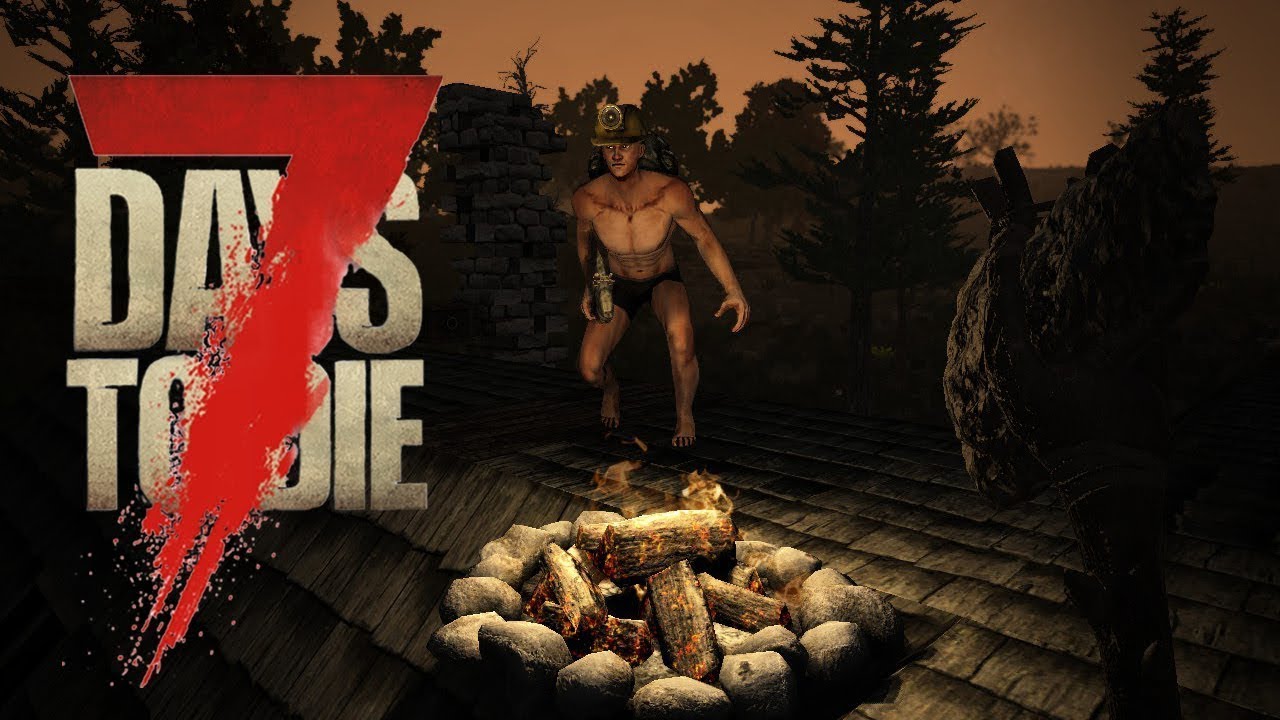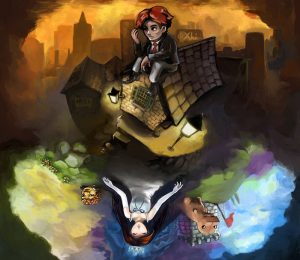
Lateest Early Access Release
The release of zombie survival game 7 Days to is a big and significant event for many people, which deserves a nomination in the spirit of “The Lateest Early Access Release”. The game appeared in Early Access back in 2013 and only 11 years later it reached version 1.0. All this time, it was apparently in the state of “alpha”: all major updates were called so and so – Alpha number so-and-so. The authors also approached the release as cautiously as possible, speaking only about approximate dates – say, sometime in June. As a result, the historical event happened on June 24.
Stock up on resources and time
The events of 7 Days take place somewhere in Arizona in 2034, in the midst of a catastrophic pandemic that is killing millions of people around the world. Cities are filled with the reanimated, and atomic bombs have already been dropped on many of them.
We are in the midst of it all just trying to survive. The whole game is described by the meme “I can dig, I can’t dig”. You have to dig along and across, wide and deep, in some places very deep – both to extract resources and treasures, and to ensure your own safety. And believe me, it’s worth it, so it’s better to dig.
Both the early version and the release version of 7 Days emphasize two fundamental points. The first is that you have to dig and extract resources, chop trees, and dig rocks for a long time. And mostly it is necessary to build and strengthen your shelter. The very process of its construction is also difficult and long. Here the authors stayed true to themselves and did not look back at more modern and comfortable for the player representatives of the genre like Enshrouded, where in the first hours you can build yourself a nice village and drive a couple of specialists there.
Dawn of the Living during Moon
And that’s because – and this is the second key point of the game – once a week there is a real hell. All those infected with the zombie virus reach their maximum strength on the seventh day. That’s why at the end of each game week we face the most serious challenge – the so-called Moon rises.
First, lightning strikes, clouds turn, then fog descends, visibility sharply deteriorates. At 22:00 a siren sounds, and strong zombies start running out at you from all sides. There are up to four people per second, maximum they can be two dozen, and the higher your level, the stronger they are.
Zombies know where you are, they can see perfectly and never get tired – they chase you to the end, no matter where you are. And if you try to get away from them on a vehicle, you will be attacked and slowed down by wild animals and monstrous-looking birds. And so – until morning, when the stop running and turn into walkers again.
You can, of course, try your best, climb the highest skyscrapers or burrow deep, very deep. You can turn into Train-A from the TV series “Patsany” – inject yourself with steroids, get effects or equipment elements that increase your speed to quickly run away from the zombies, and then shoot them. But these are all unreliable methods.
The most effective way is to build a shelter. And it should be done competently and in the right place. Someone builds fortified houses on supports that rise above the lake, someone digs long and deep tunnels, puts steel hatches, covers it all with traps and turrets. And so on – there are a lot of options.
The main thing is to remember that 7 Days uses voxel technology, and this gives you the opportunity to build and destroy buildings. This is actively used by zombaks, who can destroy almost any building. Especially if they are ill-advisedly designed – it is important to correctly put the columns and walls – if they are a weak point, they will be destroyed faster, and with them can be folded and the whole building.
Books and magazines vs. zombies
The whole game actually boils down to the fact that we prepare for the Moon in order to survive it and not get a penalty to experience in case of death. There are very flexible settings – you can adjust the frequency of the Moon or even disable it altogether or remove the penalty when the character dies. But it’s better to play as the authors intended or even complicate your life – it’s more interesting that way.
To prepare and create a safe shelter, you need to collect resources, loot, hunt, craft useful items – on the move or at workstations and workbenches, as well as in forges. There are a lot of resource varieties – even paper and bones can be used.
There is a long list of things we can create. To craft easier items it is enough to have initial resources, in other cases you may need recipes, skills and workbenches. You can craft robotic turrets and various modes of transportation, including a motorcycle and even a helicopter, aka gyroplane.
Reading books and magazines will also help – the former unlock permanent skills, the latter increase the quality of items you create, and related skills increase the chance of getting the appropriate loot. In general, there are a lot of all kinds of skills for almost all cases of life (or rather, survival). They are distributed in groups that relate to key characteristics such as strength, dexterity and intelligence. Plus a separate group is allocated to crafting skills and skills unlocked by reading books.
We get experience for almost every sneeze in the game. There are also tasks at six merchants, for which we also get “exp”. But still, gaining experience and gaining new levels that give you skill points is not a quick process. In addition, there are many skills in each category, and those skills are broken down into separate thematic skills. For example, in the category “Fortitude” there is a group of life-sustaining skills, and there is a skill “Hunter”, which allows you to hunt more efficiently and collect more meat, bones and skin from animals. Now, it has five more levels.
What a scary way to live…
So it will take a huge amount of time to learn everything and everything and reach the maximum, 300th level. Meanwhile, zombies won’t do you any favors from the start, especially if you foolishly set the difficulty level “Warrior” or higher (there are six of them in total).
There are many biomes in 7 Days – forest, snow, wasteland, desert, scorched earth. And each one is full of large and small settlements, themed zones and points of interest, where you need to search everything in search of useful items. But practically in every house and in the open area from different sides you are attacked by monsters. The higher the level of the location (1-5 stars), the more dangerous the enemies are, but there are also more loot. Plus, the chance to find something rare increases – for example, parts of armor for making equipment sets.
Then more advanced types of people appear. Some of them spit acid, banshees scream and summon other creatures, creepers attack from the grass and get into places where normal enemies won’t go, and spiders, on the contrary, can climb higher.
Add to this the fragility of the character himself. He needs food and water (except that he doesn’t depend on sleep), he can get dysentery if he drinks dirty water or eats something wrong. And zombie blows can stun, blind, injure, and affect various stats. Antibiotics, splints for fractures and rather rare drugs will help.
In the rain, the character gets wet and freezes, so he has to dress warmer and warm himself by the fire – especially in the winter biome. And in the wasteland and desert, on the contrary, we are forced to run almost naked. The character loses stamina faster and moves slower if he carries too much weight. And all items, including weapons, can break.
In such conditions it seems to be better to survive with friends – the game supports co-op for up to 16 people. It’s really more interesting and fun, but not the fact that it’s easier. Danger, including during the Moon, grows in proportion to the number of players on the server.
Crafting and loot are at the top of the list
In the release version of 7 Days the difficulty has even increased. The authors not only updated the enemy models, making them a little more diverse, but also added health points to many of them. They also made the horde’s behavior more consistent and dangerous.
At the same time, the developers have reduced the influence of merchants. There are more quests from the “Bring/dig up supplies” series (now 10 for each merchant), and the fulfillment of each quest goes to the merchant’s reputation – and with its increase we get new quests that give us more experience and money. But now you can’t buy many rare items, resources and weapons from them. This is done so that players are more engaged in crafting and loot, that is, exploring locations, where, accordingly, the chance of finding valuables has increased.
But the traders themselves have become more talkative and periodically share lore. Also each of them is tied to their biome – they consistently send to another colleague as you progress on their quests. And now there will be no situations when a merchant Joel from one region sends you to the same Joel in another.
The developers also added as many as 16 new sets of light, medium and heavy armor, distributed by specialization. They basically changed the principle of creating armor, added modules that can be installed in the headgear, but most importantly, allowed you to craft equipment of the highest, sixth level. However, for this you need legendary parts, and to find them, even taking into account the increased chance of rarities, is very difficult.
The authors have not forgotten about newcomers. At the start the new system of achievements/tests catches your eye at once. The fulfillment of any, even simple, from the series “Create a torch”, “Carve an animal carcass”, gives a certain amount of experience. This, of course, is a great help – as well as the opportunity to build structures on asphalt.
Also 7 Days has improved its appearance – not as much as we would like, but in general it looks more pleasant. Especially it concerns animation and effects of explosions and dismemberment. Most importantly, optimization is better, and random world generation is faster. This is despite the fact that the cities have become larger.
In version 1.0 there are a lot of new locations, zones and points of interest, including the fifth level. Some of them, like the hotel and the Minotaur Theater, are really amazing. This is generally one of the main arguments of 7 Days – all important locations are detailed and well done in terms of design.
What’s next?
Of course, the authors still have a lot to improve and add. For now they call version 1.0 experimental – at the end of July the “stable” build will be released.
I would like to see new types of zombies, not just old acquaintances in new clothes (as it happened, with the jailer). Many animal models remain the same. And clearly something needs to be done with close combat – if with firearms everything is more or less normal, then fights using cold weapons look as primitive as possible.
Finally, the developers admitted that at the time of release in version 1.0 there are several critical and a dozen serious bugs. We can only hope that they will fix everything by the release of the stable version at the end of July, when 7 Days will be available on all platforms.
In any case, the fact that after 11 years such a big and complicated game has made it to the release deserves respect. In conditions when younger, more comfortable and attractive for modern audience competitors are constantly released, 7 Days managed to survive and remained one of the main representatives of the genre – not the most comfortable and beautiful, but fascinating and unique in many ways.
Pros: complex, deep and interesting survival mechanics; a lot of opportunities to build a shelter; a variety of locations and regions; in the release version added a lot of correct innovations; the game looked better; optimization became better.
Cons: primitive melee combat; the game may seem too slow and stuffy; quite a lot of bugs even in the release version; graphics still looks outdated.





